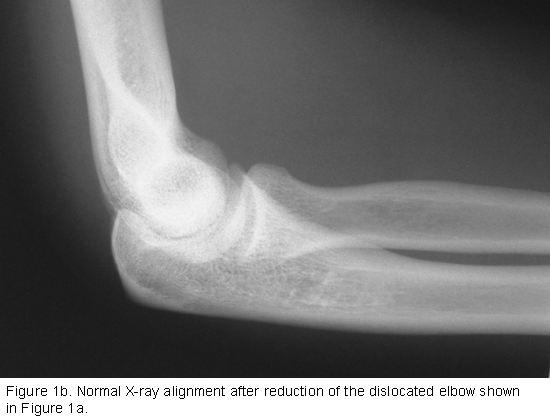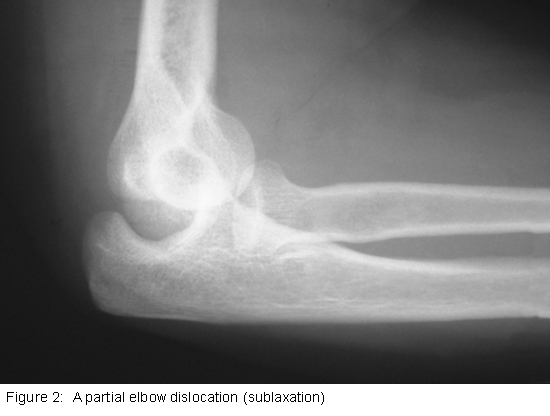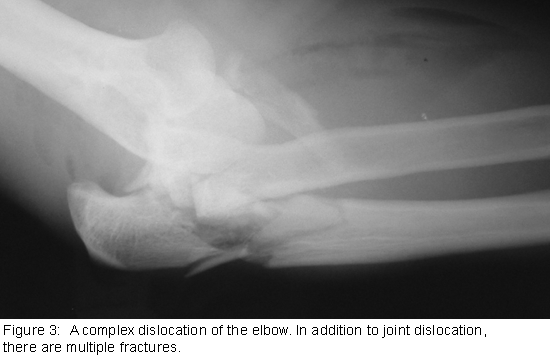Description
When the joint surfaces of an elbow are separated, the elbow is dislocated. Elbow dislocations can be complete or partial. In a complete dislocation, the joint surfaces are completely separated (Figure 1a). In a partial dislocation, the joint surfaces are only partly separated. A partial dislocation is also called a subluxation (Figure 2).



The elbow is stable due to bone surfaces, ligaments (which connect bones) and muscles. When an elbow dislocates, all of these can be injured to different degrees. A simple dislocation does not have any major bone injury. A complex dislocation can have severe bone and ligament injuries (Figure 3). In the most severe dislocations, there is injury to the blood vessels and nerves that travel across the elbow. If this happens, there is a risk of losing the arm.

Three bones come together to make up the elbow joint (Figure 4). The humerus bone is in the upper part of the arm and attaches to the two bones of the forearm (ulna and radius). Each of these bones has a very distinct shape. Ligaments connect all three bones together.
